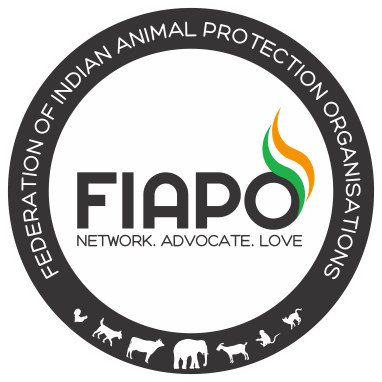What goes into the daily glass of milk that ends up on your table? A recurring process of animal cruelty, according to a two-year nationwide study by Pune animal protection group Animal Equality.
Inexperienced men using unsterile equipment to artificially inseminate dairy animals, calves snatched from their mothers just days after birth, animals being brutally hit with sticks, chains or sold to slaughter houses when there is a drop in milk production — these were the findings of the group’s undercover study of dairy farms across India, documented through photos and videos.
Around 107 dairy farms, two semen-collection centres, 11 cattle markets, eight slaughterhouses, seven meat markets and five tanneries in Haryana, Punjab, Telangana, Kerala, Tamil Nadu, Karnataka, Uttar Pradesh, Gujarat and Maharashtra were investigated.
The study, released on Saturday, National Milk Day, shows how practices violate the Prevention of Cruelty to Animals (PCA) Act, 1960, Transport Rules, 1978, Slaughterhouse Rules, 2001, and various high court and Supreme Court orders. It recommends that Dairy Animal Welfare Rules and guidelines for proper handling of cattle be introduced.
Young buffaloes being taken to the slaughterhouse.
“It may seem that cattle in India are protected, but they are tortured daily ,” said Amruta Ubale, executive director, Animal Equality. “In the wild, cattle may live up to 20 years. These cruel practices cause their bodies to deteriorate at the age of just four,” she said.
She added that unproductive animals are killed and supplied to the beef and leather industry. “These industries pump cows and buffaloes with hormones. Dairy owners medicate animals themselves to save costs, leaving them with injuries and untreated diseases,” she said.
Reproduction in dairy farms, irrespective of their size, does not take place through natural mating. All 107 dairy farms used artificial insemination Calves are separated from their mothers Dead calves are stuffed with hay to trick the mother so milk production could continue Around 75% of dairy farmers were filmed saying that if production reduced by 1 or 2 litres, the animal was sent to a slaughterhouse At slaughterhouses and cattle farms, more than 30 animals are stuffed into a truck at a time, violating transport rules. People transporting them pinch the animals’ genitals to force them to move, rub chilly powder into their eyes to distort their vision, and break their tails to make them submissive
At slaughterhouses and cattle farms, animals are not stunned before being butchered. They are skinned alive
Oxytocin — a hormone that causes the uterus to contract — that is banned by the Centre, is used to increase milk production. This not only harms the animal’s reproductive systems, but also reduces their lifespan According to the department of animal husbandry, dairying and fisheries, India has 327 million cattle, the most in the world. The government invested Rs2,242 crore to help meet a national demand of 150 million tonnes of milk by 2016-17, which is expected to increase to 210 million tonnes by 2021.
Radha Mohan Singh, Union minister for agriculture and farmers welfare, told HT several national and state-level schemes had been introduced over the past two years to facilitate an increase in milk production and promote security for animals. “We started the Rashtriya Gokul Mission to conserve and develop indigenous breeds, set up a national breeding centre and 18 more such centres across India. We managed a 20% increase in milk production in India. This will boost farmers’ efforts to protect their cattle.”
But, activists said an equitable demand for milk nationwide would help animal welfare. “It is time to reconsider our dairy policy and make consumption equitable so we have fewer animals. Only then will we have sustainable animal agriculture and animal welfare can be made a priority,” said NG Jayasimha, member, Maharashtra animal welfare board and managing director, Humane Society International/India.
A senior official from the union environment ministry said guidelines are issued under Prevention of Cruelty to Animals Act, 1960, but the department of animal husbandry does the monitoring. The national spokesperson from National Diary Development Board, Gujarat, said they were working with all 206 cooperatives in India where trained professionals were taking care of animals in a scientific manner through private veterinary practices such as vaccines and breeding.
Experts said guidelines drafted by the Animal Welfare Board of India (AWBI) have been ignored by the central government. “There are rules under PCA Act, standalone rules drafted by municipal corporations and local bodies, and suggestions have been made to strengthen them. But there is no will to implement them on the ground,” said Dr S Chinny Krishna, former vice chairman, AWBI.
Strict standards of hygiene, discontinue tethering of animals and leave them open in a designated area, Effectively implement the oxytocin prohibition, prohibit cosmetic practices such as dehorning, tail docking and branding
Increase the minimum penalty of Rs50 to Rs 20,000 under the Prevention of Cruelty to Animals Act, 1960
Date : 27 November 2017
Source : http://www.hindustantimes.com/mumbai-news/two-year-undercover-study-reveals-cruel-side-of-india-s-dairy-industries/story-7icLDyv1Rq2tVV2kbYKccN.html



